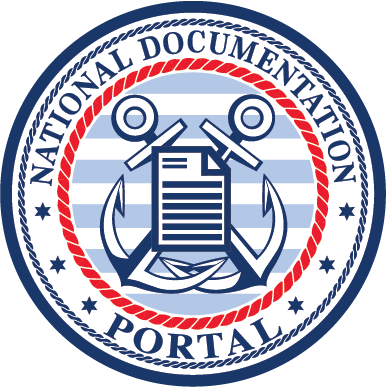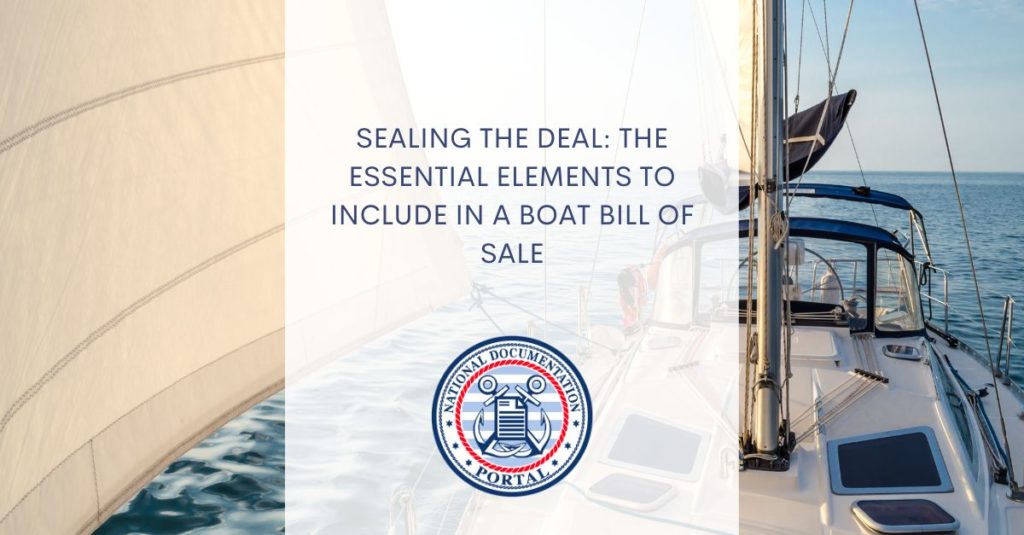A boat bill of sale is a vital document that seals the deal between buyers and sellers in a boat transaction. It serves as a legally binding agreement that outlines the terms and conditions of the sale, ensuring clarity and protection for both parties. The National Documentation Portal, a reputable private agency specializing in USCG Documentation processing, plays a crucial role in facilitating seamless boat transactions. In this article, we explore the essential elements to include in a boat bill of sale and how the National Documentation Portal assists buyers and sellers in creating a comprehensive and effective document.
1. Parties Involved:
The first element of a boat bill of sale is the identification of the parties involved—the buyer and the seller. Include their full names, contact information, and addresses. Clearly identifying both parties ensures that the document accurately reflects their intentions and serves as proof of the transaction.
2. Description of the Boat:
Provide a detailed description of the boat being sold. Include information such as the make, model, year, hull identification number (HIN), and registration number. This description helps to uniquely identify the vessel and avoids any confusion or misunderstandings regarding the boat’s specifications.
3. Purchase Price:
Specify the purchase price agreed upon by the buyer and seller. This is a crucial element that outlines the financial aspect of the transaction. Clearly state the currency and whether any additional payments, such as taxes or fees, are included in the purchase price.
4. Payment Terms:
Outline the payment terms agreed upon by both parties. Specify if the payment will be made in a lump sum or in installments. Include details regarding the payment method, such as cash, check, or electronic transfer. It’s important to be clear about the payment schedule and any applicable due dates.
5. Warranties and Disclosures:
Include any warranties or guarantees provided by the seller regarding the boat’s condition, title, or any specific components. If there are any known defects or issues with the boat, it is essential to disclose them in the bill of sale. This promotes transparency and helps manage expectations between the buyer and seller.
6. Representations and Indemnifications:
Include a section where both parties make representations about their ownership rights and authority to sell or purchase the boat. This establishes that the seller has the legal right to sell the boat, and the buyer has the legal capacity to purchase it. Additionally, outline indemnification clauses to protect both parties against any claims or liabilities arising from the transaction.
7. Signatures and Dates:
The boat bill of sale must be signed and dated by both the buyer and the seller. Signatures validate the document and confirm the parties’ agreement to the terms outlined. It is important to ensure that all required signatures are obtained before the completion of the transaction.
8. Witnesses or Notary Public:
While not always required, having witnesses or a notary public present during the signing of the bill of sale can add an extra layer of authenticity and legal validity. This can provide additional assurance and confidence to both parties involved in the transaction.

Well-Crafted Boat Bill Of Sale
A comprehensive and well-crafted boat bill of sale is essential for a successful transaction between buyers and sellers. By including the essential elements outlined above, both parties can ensure clarity, transparency, and legal protection throughout the process. The National Documentation Portal acts as a trusted resource, assisting buyers and sellers in creating a thorough boat bill of sale and facilitating a seamless transaction experience. With the National Documentation Portal’s guidance, buyers and sellers can confidently seal the deal and embark on their boating journey with peace of mind.

